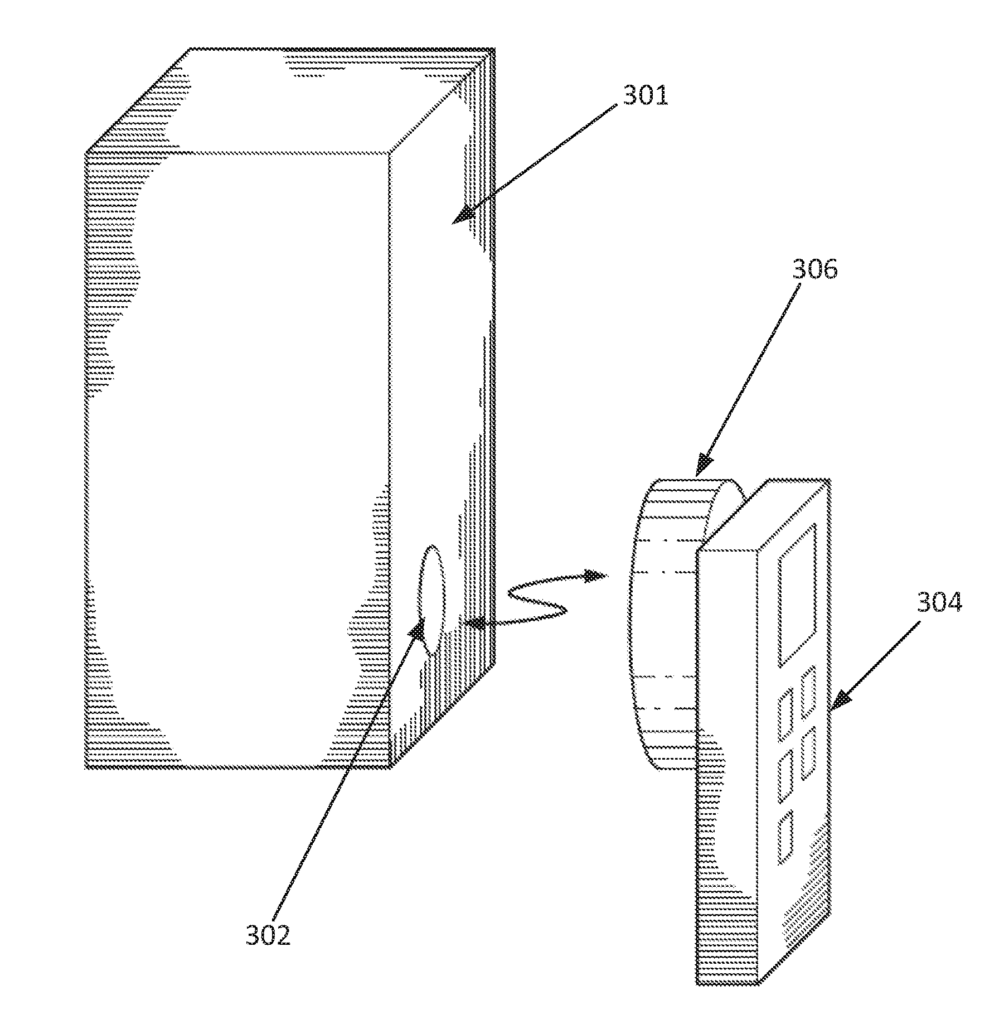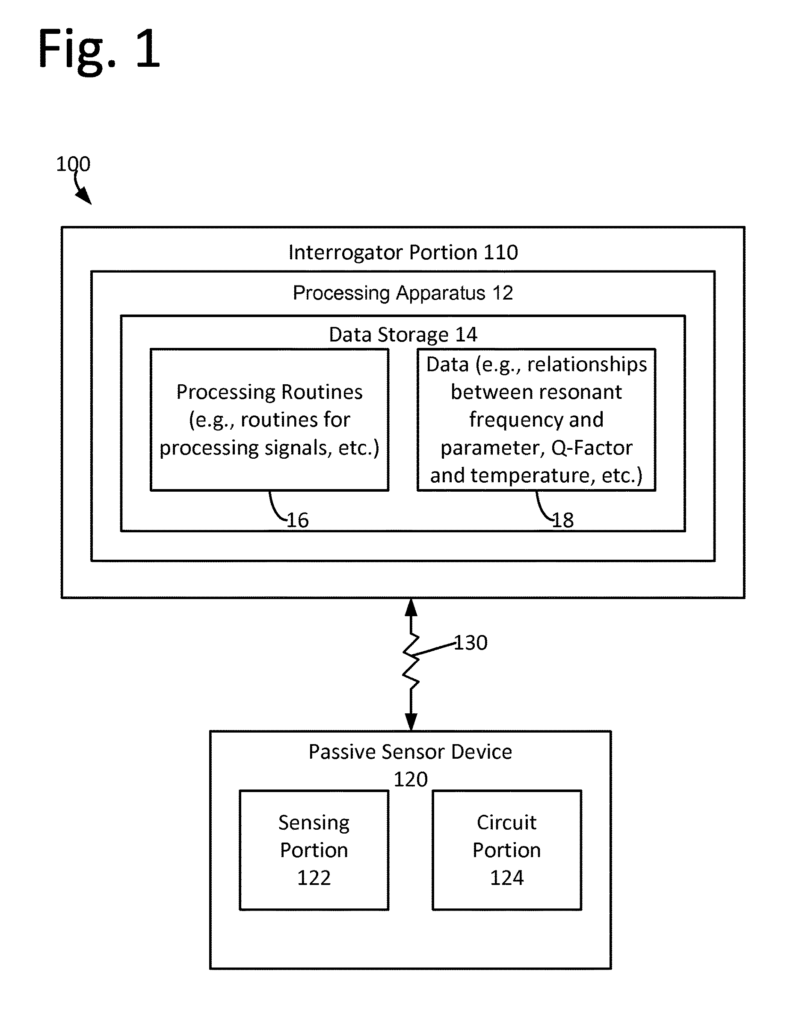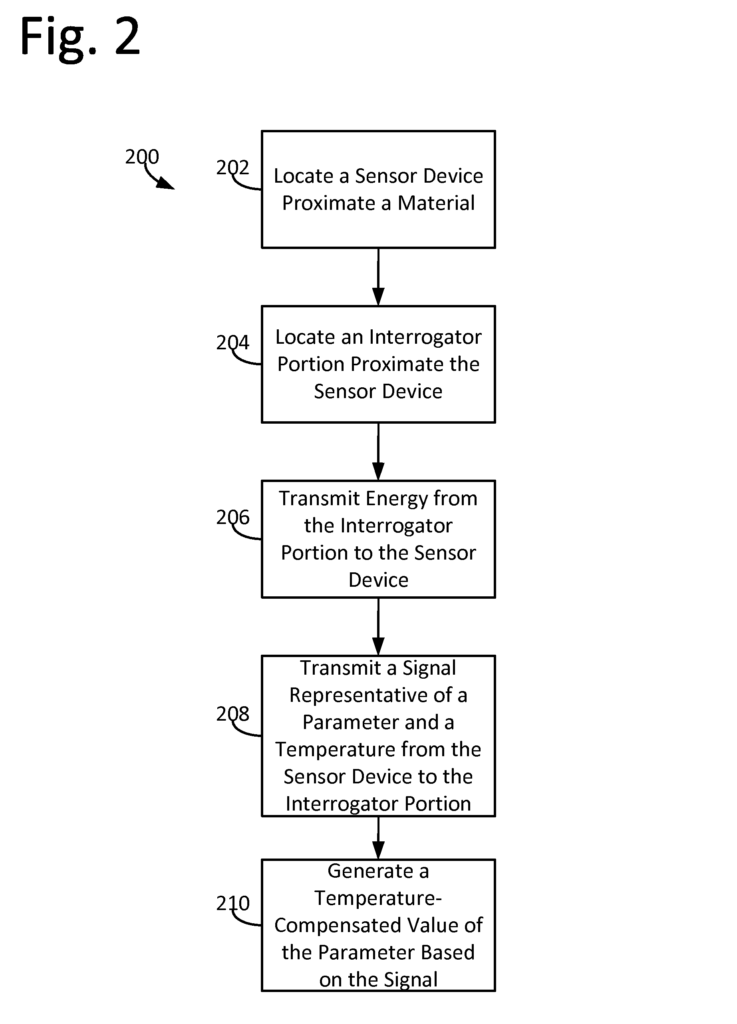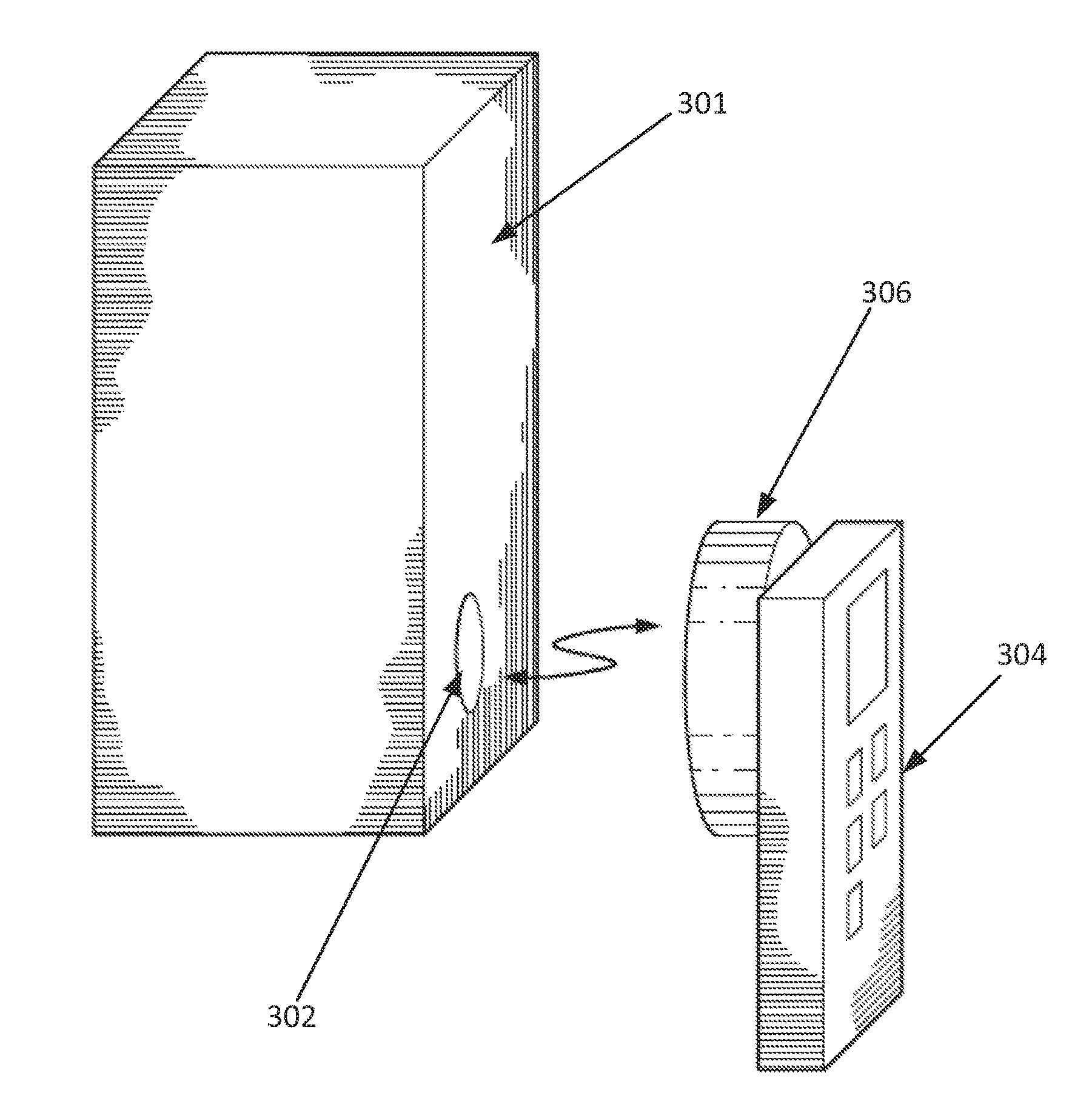Invented by Greg E. Bridges, Douglas L. Thomson, Sharmistha Bhadra, Michael Freund, University of Manitoba
Passive wireless sensors work by harnessing energy from their environment, such as radio frequency signals or ambient light, to power their operations. This eliminates the need for frequent battery replacements or wired connections, making them highly convenient and low-maintenance. Additionally, their wireless capabilities allow for easy installation and scalability, making them suitable for a wide range of applications.
One of the key industries benefiting from passive wireless sensors is the healthcare sector. These sensors can be used for remote patient monitoring, ensuring that vital signs are continuously monitored without the need for invasive procedures or constant hospital visits. This enables healthcare professionals to detect any abnormalities or changes in a patient’s condition in real-time, leading to more timely interventions and improved patient outcomes.
Another industry that has embraced passive wireless sensors is agriculture. These sensors can be deployed in fields to monitor soil moisture levels, temperature, and other environmental factors. This data can then be used to optimize irrigation schedules, reduce water waste, and improve crop yields. By providing farmers with accurate and up-to-date information, passive wireless sensors help increase productivity and reduce costs.
The manufacturing industry is also benefiting from the use of passive wireless sensors. These sensors can be integrated into machinery and equipment to monitor performance, detect faults, and predict maintenance needs. By continuously monitoring equipment, manufacturers can prevent costly breakdowns, reduce downtime, and improve overall operational efficiency.
The transportation and logistics sector is another area where passive wireless sensors are making a significant impact. These sensors can be used to track and monitor the condition of goods during transportation, ensuring that they are handled properly and that any deviations from optimal conditions are detected. This is particularly important for perishable goods, pharmaceuticals, and other sensitive products.
The market for passive wireless sensors is expected to continue growing in the coming years. Advancements in technology, such as improved energy harvesting techniques and miniaturization, will further enhance the capabilities of these sensors and expand their applications. Additionally, the increasing focus on sustainability and energy efficiency will drive the adoption of passive wireless sensors as they offer a greener alternative to traditional wired or battery-powered sensors.
In conclusion, the market for passive wireless sensors is experiencing significant growth due to their numerous advantages and wide range of applications. From healthcare to agriculture, manufacturing to transportation, these sensors are revolutionizing industries by providing real-time data collection and analysis without the need for power sources or wired connections. As technology continues to advance, the potential for passive wireless sensors will only continue to expand, making them an essential tool for monitoring and optimizing various processes.

The University of Manitoba invention works as follows
Systems, Devices, and/or Methods for Use in Passive Wireless Transmission of One or More Parameters such as pH, Temperature, etc.” are described. The systems, devices and/or methods can use a passive sensing device located near a material, as well as an interrogator to probe the sensor and receive a signal that represents one or more parameters.

Background for Passive wireless sensor
The present disclosure is a general description of wireless sensing. The present disclosure relates to devices, methods, and systems for passive wireless transmissions of a sensed parameter (e.g. pH, etc.). One or more of the exemplary devices described herein also include temperature compensation.
The sensors described in this invention can be used to measure parameters for a variety of materials, such as biomaterials or milk. Freshness of milk is important for public health. Milk is consumed all over the world. Food poisoning or disease outbreaks can be caused by milk spoilage. Monitoring the quality of milk while it is being transported and stored may therefore prove beneficial. IEEE Sensors J, vol. 12, no. 3, pp. “March 2012),” pp.
Bacteria Growth is a Source of Milk Spoilage” (see, e.g. W. D. Huang and S. Deb. Y. S. Seo. S. Rao. M. Chiao. J. C. Chiao.?A Passive Radio-Frequency pH-Sensing Tag for Wireless Food-Quality Monitoring,? IEEE Sensors J., vol. 12, no. 3, pp. Sensors, vol. Sensors, vol. 2, pp. 219-232; N. Nicolaou, and R. Goodacre: “Rapid and Quantitative detection of the microbial contamination in milk using Fourier Transform Infrared Spectroscopy and Chemometrics”, 2002. The Analyst, vol. 133, no. 10, pp. 1424-1431 (July 2008). To monitor the concentration of bacteria in milk, standard plate count or psychotrophic bacteria counts can be used. Standard plate count or psychotrophic bacteria counts can be labor-intensive and time-consuming. Microbiological impedance instruments may be a less time-consuming way to estimate the bacteria count. However, they can introduce contamination. Sensors, vol. 2, pp. 219-232, 2002).
Gas sensors are another common method of monitoring milk freshness. Gas sensors can be made from metal oxide semiconductors or conducting organic polymers, or they may use piezoelectric crystalline crystals. They rely on the changes in conductivity caused by the adsorption and surface reactions of milk during spoilage. Gas sensors can be affected by environmental factors such as temperature and moisture (see W. D. Huang and S. Deb in ‘A passive radio-frequency ph-sensing label for wireless food quality monitoring? IEEE Sensors J., vol. 12, no. 3, pp. 487-495 (March 2012). “As such, it may be desirable to have a simple and cost-effective remote milk quality monitor that can be embedded into the milk container, as a milk freshness indicator.
Bioreactors are used most often to carry out bioprocesses in order to produce various commodities and chemicals. In bioprocesses, pH control is important for optimal cell growth. Many cells also produce acids by-products as a result of their metabolism. Monitoring and regulating pH in the biological medium is important for successful operation of bioreactors (see, e.g. P. Harms Y. Kostov G. Rao – Bioprocess monitoring). Current Opinion in Biology, vol. 13, no. 2, pp. 124-127 (April 2002); and A. S. Jeevarajan and S. Vani with T. D. Taylor, M. M. Anderson and?Continuous monitoring of pH in a perfused system using an optical pH sensors? Biotechnology and Bioengineering vol. 78, no. 4, pp. “May 2002),” pp.
Very few pH sensors can be used in bioreactors, as most of them cannot withstand the harsh bioprocessing environment within a bioreactor. For example, the medium could permeate the sensor and cause it to malfunction. Sensor readings may also be affected if the fluid medium culture is not well defined. Moreover, sterilization may be necessary to prevent medium contamination in order to not interfere metabolism (see, e.g. P. Harms Y. Kostov G. Rao and ‘Bioprocess Monitoring,? Current opinion in Biotechnology vol. 13, no. 2, pp. 124-127 (April 2002). In bioreactors, non-invasive optical sensor based on fluorescence or absorbance from pH-sensitive dyes has been used. Optical sensor technologies, however, can suffer from a limited operating range or drifting over the course of time. BioProcess International vol. 10, no. 1, pp. 50-56 (January 2012); and H. R. Kermis and Y. Kostov with P. Harms, G. Rao and H. R. Kermis.?Dual Excitation Ratiometric Fluorescent pH Sensor for Noninvasive Bioprocess Monitoring: Development and Application? Biotechnology Progress, vol. 18, no. 5, pp. “1047-1053 (September 2002)
The disclosure herein is about passive sensors which can measure pH, temperature etc. Wirelessly transmit these measured parameters. Interrogators can energize passive sensors and receive one or more signals that represent the measured parameters. The interrogator can then generate values using the parameters. The interrogator can adjust or compensate one of the parameters using another parameter. The interrogator can, for example, adjust or compensate a pH value received based on the temperature value that was received, since pH values may be temperature-sensitive.
One exemplary embodiment comprises an integrated wireless sensor for remote pH measurement using temperature compensation. The sensor can be an RLC resonant system that includes a planar inductor in parallel with a temperature-dependent resistor (e.g. thermistor), and a voltage-dependent capacitor (e.g. varactor). The sensor can also include a pH-combination electrode that includes an iridium/iridium chloride (Ir/IrOx), sensing electrode, and a silver/silver halide (Ag/AgCl), reference electrode. This combination electrode may be connected parallel to the varactor. The voltage-dependent capacitance may be altered by a potential difference across the electrodes caused by pH variations of the solution (e.g. which the electrodes were exposed to).
Another example embodiment is a passive wireless sensor for remote pH measurement of milk fluid. The sensor can include a spiral planar inductor that is connected or electrically coupled in parallel with a varactor forming a LC resonant loop. The sensor can also include a pH-combination electrode made up of (e.g.) an iridium/iridium chloride sensing electrode and an silver/silver chloride reference electrode. This electrode may be connected or electrically coupled in parallel with the varactor. The voltage across the electrodes can change as the pH of the spoilt milk changes, changing the resonant frequencies of the sensor. In order to monitor in-fluid, the sensor can be sandwiched with dielectric spacers. This will reduce parasitic capacitive coupled and eddy current losses. In one embodiment, a sensor is hermetically sealed (e.g. to prevent fluid from entering the sensor circuitry), e.g. in a low loss material. A low loss material can allow passive transmission of signal representing a parameter, such as pH, from or to the inside of the material. The material could be adjacent to or next to a container wall (e.g. touching or in contact with the wall so that there is no fluid between the material and the container wall). The low-loss materials may not prevent wireless signal transmission from or to sensor circuitry contained in the low loss material. In one embodiment, low-loss materials surrounding the sensor can be placed in fluid, close to the wall, but fluid may still be between the sensor, and the wall.
The resonant frequencies of the sensor can be monitored remotely using an interrogator coil connected to the sensor’s inductor. In one embodiment, milk pH can be measured with a sensitivity of at least 100 kilohertz/pH and a precision of at least 0.12 pH between pH 6.8 and pH 4.4.

One exemplary implementation is a wireless pH sensor that can be used for remote monitoring of bioprocesses. The sensor can be small enough for a bioreactor, test tube or other small container. It may also include a planar inductor that is connected in parallel with a varactor to form a LC resonant system. The circuitry of the pH sensor used for remote monitoring can be hermetically closed and/or enclosed in a low loss material. The sensor can be hermetically closed to reduce parasitic capacitive coupling, eddy current losses and parasitic capacitive coupling.
The sensor can also include a pH-combination electrode consisting/made of (e.g.) an iridium/iridium chloride sensing electrode, and a reference electrode made from silver/silver chloride (e.g. a silver/silver chloride electrode with nation coating), both connected or electrically coupled in parallel to varactor. The voltage across the electrodes changes as the pH level of the medium in the bioreactor (or test tube) changes. This shifts the resonant frequencies of the sensor. An interrogator inductor coupled inductively to the sensor can track the resonant frequencies of the sensor remotely. The sterilizable sensor can be configured in at least one embodiment to monitor the pH of a media with a minimum of 2.46 megahertz/pH and a maximum deviation at least of 0.07 pH when compared to a commercial pH probe reading from a range of pH 6.5 to 5.26.
One exemplary wireless system may include a passive device that can be located near a material, such as a perishable material. It also includes an interrogator component which is located close to the passive sensor. The passive sensor device can include a sensing section and a circuit section. The sensing part may be configured for measuring a material parameter and at least some of the sensing part may be exposed to the material. The circuit portion can be electrically connected to the sensing section and configured to measure both the parameter and the temperature using the sensing segment. When energized, the circuit portion can be configured to wirelessly send a signal (e.g. a single sign) representative of both the measured parameter as well as the temperature. The interrogator may include interrogating logic configured to wirelessly send energy to the active sensor device’s circuit portion (e.g. wirelessly transmit the energy using a swept-frequency source or a time gated swept-frequency source) and wirelessly receive a signal representative the measured parameter (e.g. wirelessly receive a signal representative the measured parameter after a predetermined period of time following the wirelessly transmitted energy). Further, the interrogating circuitry may be further configured to generate a temperature-compensated value (e.g., pH) of the parameter based on the received signal (e.g., configured to determine the measured parameter and the measured temperature from at least one of the frequency response of the signal and the time response of the signal).
An exemplary passive sensing device for wireless transmission of the parameter of a perishable material (e.g.) may include both a sensing and circuit portion. The sensing part may be configured to measure a material parameter and at least some of the sensing part is exposed to the material. The circuit portion can be electrically connected to the sensor portion. It may be configured to use the sensing part to measure the parameter and to measure temperature near the sensing part. When energized, the circuit portion can wirelessly transmit (e.g. a single signal), a signal representative of the temperature and the parameter measured. The measured parameter and the measured temperature may correlate to a temperature-compensated value (e.g., pH) of the parameter.
An exemplary passive sensing device for fireless transmission of the parameter of a liquid material (e.g. perishable material), within a container having at least one wall, may include a circuit portion hermetically sealed and a sensing section. The sensing section may be configured to measure a parameter for a fluid within a container. At least a portion of this sensing segment is exposed to the fluid. The hermetically sealed circuit portion can be configured to be located within the container, adjacent to at least one container wall and electrically connected to the sensing section. The circuit portion can be configured to measure a parameter of fluid material in the container by using the sensing section, and wirelessly transmitting a signal representative (e.g. pH) when powered up by an interrogator located near the circuit portion.
An exemplary method for wireless transmission of a parameter may include placing a passive sensing device near a material (e.g. perishable material). The passive sensor device can include a sensing section configured to measure a material parameter and a circuit segment electrically connected to the sensing section. A portion of the sensor portion is exposed to material. The circuit portion can be configured to measure temperature near the sensing section and measure the parameter. The exemplary method may further include locating an interrogator proximate the passive sensor device, wirelessly transmitting energy from the interrogator to the circuit portion of the passive sensor device (e.g., wirelessly transmit energy to the circuit portion using at least one of a swept frequency source and a time-gated swept frequency source), wirelessly transmitting a signal (e.g., a single signal) representative of the measured parameter and the measured temperature from the circuit portion of the passive sensor device, and generating a temperature-compensated value (e.g., pH) of the parameter based on the signal representative of the measured parameter and the measured temperature (e.g., configured to determine the measured parameter and the measured temperature from at least one of the frequency response of the signal and the time response of the signal).
In one or more exemplary devices, systems, or methods, a sensing portion can include a first electrolyte exposable on the material, and a second electrolyte exposable on the material (e.g. at least one electrode of the first electrode or the second electrode could include a nation). The circuit portion can be electrically connected to the first and second electrodes and configured to measure the potential between the electrodes.
The circuit portion can be configured so that the resonant signal frequency and quality factor shift in response changes in temperature measured near the sensing portion. The circuit portion can also be embedded in a container that at least partly contains the material. At least a portion is packaged for a perishable product. The circuit portion of the passive sensing device can include an inductive coil coupled to an electro-capacitor (e.g. a varactor) that changes the capacitance depending on the measured parameter.
Click here to view the patent on Google Patents.

Leave a Reply